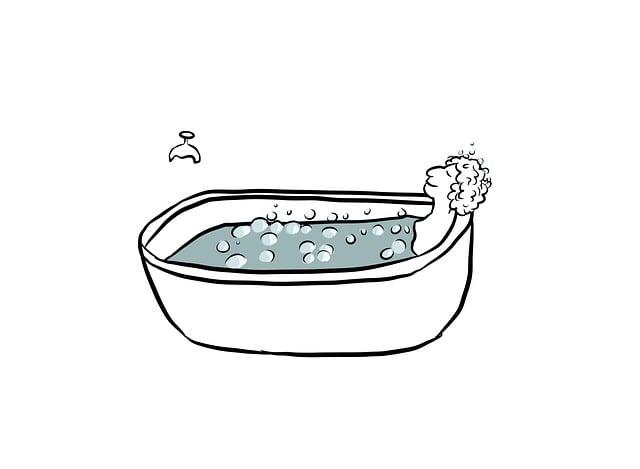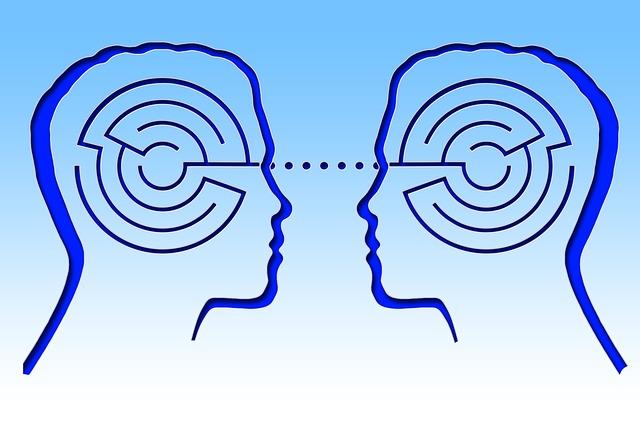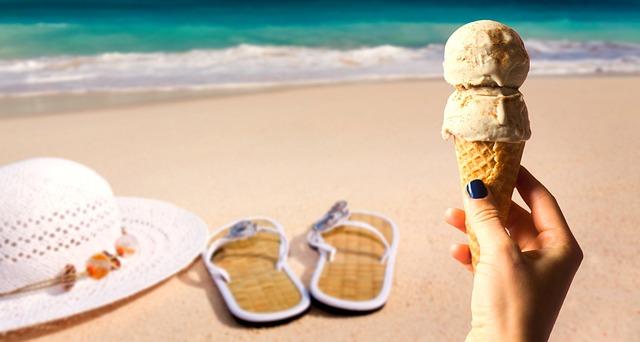Does Ice Bath Burn Calories: The Cold Truth About Caloric Burn

Have you ever wondered if taking an ice bath can help you shed those stubborn calories? Well, we’re here to uncover the chilling truth behind caloric burn and ice baths. Whether you’re an avid fitness enthusiast or simply curious about the science behind weight loss, this article will dive deep into the cold facts and give you a clear understanding of whether ice baths can truly melt away those extra pounds. So, grab a warm cup of tea and let’s explore the frozen world of caloric burn together!
Contents
- 1. Understanding the Science: How Ice Baths Affect Caloric Burn
- 2. The Role of Thermogenesis: Exploring the Body’s Response to Cold Temperatures
- 3. Ice Baths vs. Exercise: Comparing the Impact on Caloric Expenditure
- 4. Discovering the Truth: Can Ice Baths Truly Burn Calories?
- 5. Maximizing the Benefits: Tips for Incorporating Ice Baths into your Fitness Routine
- 6. Cold Exposure Techniques: Alternative Methods to Enhance Caloric Burn
- 7. Considerations and Caveats: Potential Risks and Limitations of Ice Baths
- 8. Combining Cold and Warm Therapy: Unlocking the Power of Contrast Therapy
- 9. Personal Factors and Variances: How Individual Differences Impact Caloric Burn in Ice Baths
- 10. The Bottom Line: Integrating Ice Baths for Overall Health and Weight Management
1. Understanding the Science: How Ice Baths Affect Caloric Burn
Ice baths have long been a topic of discussion when it comes to weight loss and calorie burning. But do ice baths really have an impact on our caloric burn? Let’s dive into the science behind it.
-
Temperature and Metabolism: When we expose our bodies to extreme temperatures, such as taking an ice bath, our metabolism kicks into gear. This is because our body needs to work harder to maintain its core temperature. When we’re cold, our body activates brown fat, a type of fat that burns calories to generate heat. So yes, ice baths can indeed increase our caloric burn.
-
Hormonal Response: Cold exposure triggers the release of certain hormones in our body. One of these hormones is norepinephrine, which stimulates the breakdown of fat cells and enhances our body’s ability to burn stored fat. Additionally, cold exposure also boosts the production of adiponectin, a hormone that regulates our metabolism and improves insulin sensitivity, leading to better fat utilization.
- Time and Intensity: The duration and intensity of the ice bath are essential factors to consider. A short dip in ice-cold water might not have a significant impact on caloric burn, but a more prolonged and intense exposure will yield better results. Aim for at least 10-15 minutes in the ice bath to maximize the metabolic benefits.
While ice baths can contribute to increased caloric burn, it’s important to note that they shouldn’t be relied upon as the sole method for weight loss. Incorporating ice baths into a well-rounded fitness routine that includes regular exercise and a balanced diet is the key to achieving sustainable results. As always, it’s recommended to consult with a healthcare professional before trying any new or extreme methods of calorie burning.
2. The Role of Thermogenesis: Exploring the Body’s Response to Cold Temperatures
One of the hottest topics in the health and fitness world right now is the role of thermogenesis and its impact on calorie burn. With cold temperatures gaining popularity as a way to stimulate this process, many people are wondering: does an ice bath really burn calories? Let’s explore the cold truth about caloric burn and how our bodies respond to freezing temperatures.
Thermogenesis is the body’s natural process of generating heat to maintain its core temperature. When exposed to cold temperatures, our bodies kick into gear to produce heat and keep us warm. This process requires energy, and in turn, burns calories. One study found that an ice bath of 14-15 degrees Celsius (57-59 degrees Fahrenheit) can increase caloric burn by up to 350 calories per hour!
So how does this work? When you submerge your body in cold water, your blood vessels constrict, causing blood flow to your extremities to decrease. This redirection of blood prompts your body to activate brown adipose tissue, also known as “brown fat.” Unlike white fat, which stores energy, brown fat’s main role is to generate heat by burning calories.
- The more brown fat you have, the more calories you can burn in cold temperatures.
- Asian populations typically have a higher amount of brown fat compared to other ethnicities.
- Regular exposure to cold temperatures may help increase your brown fat levels over time.
However, it’s important to note that while ice baths can contribute to calorie burn, they should not be seen as a standalone solution for weight loss. A healthy lifestyle that includes a balanced diet, regular exercise, and adequate sleep remains essential for overall well-being. So, while taking an ice bath might give your caloric burn a boost, don’t neglect the other pillars of a healthy lifestyle.
3. Ice Baths vs. Exercise: Comparing the Impact on Caloric Expenditure
Ice baths and exercise are both known to have a significant impact on caloric expenditure. In this section, we will compare the two and shed light on whether ice baths can actually burn calories.
-
Caloric Expenditure During Exercise: When we engage in physical activity, our bodies burn calories to generate energy. The higher the intensity of the exercise, the greater the number of calories burned. Exercise not only aids in weight loss but also has numerous benefits for cardiovascular health, muscle strength, and overall well-being.
- The Science of Ice Baths: Ice baths, on the other hand, involve immersing the body in extremely cold water, typically below 50 degrees Fahrenheit. The theory behind ice baths suggests that the body has to work harder to maintain its core temperature in such extreme cold, leading to increased caloric expenditure.
However, it is important to note that while the body may burn some calories to stay warm during an ice bath, the actual impact is relatively minimal. Studies have shown that the number of calories burned during an ice bath is significantly lower compared to exercise. Additionally, the duration of an ice bath is generally shorter than a workout session, further reducing the potential caloric burn.
In conclusion, although ice baths may have some effect on caloric expenditure, exercise remains the more effective method for burning calories. So, if your goal is to shed those extra pounds or boost your fitness level, regular physical activity is still the most reliable way to attain your goals. Keep in mind, though, that ice baths can still offer benefits for muscle recovery and reducing inflammation, making them a valuable addition to an overall fitness routine.
4. Discovering the Truth: Can Ice Baths Truly Burn Calories?
The topic of ice baths and their potential calorie-burning capabilities has gained significant attention in the health and fitness community. Many individuals have turned to this unconventional method in hopes of shedding those stubborn pounds. However, the question still remains: can ice baths truly burn calories? Let’s delve into the cold truth about caloric burn and uncover the facts surrounding this intriguing subject.
-
Thermogenesis: Ice baths, also known as cold thermogenesis, have been shown to boost metabolism and potentially increase caloric expenditure. When exposed to extreme cold temperatures, our bodies go into survival mode, activating a process called thermogenesis. During this process, our body generates heat to keep our core temperature stable, burning calories in the process.
-
Activation of brown fat: Cold exposure can also stimulate the activation of brown fat, a type of fat that is responsible for burning calories to produce heat. Unlike white fat, which stores excess energy, brown fat helps regulate body temperature and increases energy expenditure. This means that by subjecting ourselves to an ice bath, we may be able to tap into the power of brown fat and potentially burn more calories.
- The importance of consistency: While there may be some truth to the idea that ice baths can aid in calorie burning, it’s important to note that this method alone is not a magic solution for weight loss. Consistency is key when it comes to any form of exercise or weight management. Incorporating ice baths into a well-rounded fitness routine, paired with a balanced diet and regular physical activity, may provide an additional boost to your caloric burn.
In summary, ice baths have the potential to stimulate thermogenesis, boost metabolism, and activate brown fat, all of which contribute to calorie burning. However, it’s essential to approach this practice as part of a comprehensive weight management plan. Remember to consult with a healthcare professional or fitness expert before embarking on any new fitness regimen.
5. Maximizing the Benefits: Tips for Incorporating Ice Baths into your Fitness Routine
Ice baths are a popular recovery method among athletes and fitness enthusiasts alike. Not only do they provide relief from muscle soreness and inflammation, but they can also offer additional benefits when incorporated into your fitness routine. Here are some tips to help you maximize the benefits of ice baths:
-
Timing is key: Ice baths are most effective when done immediately after intense workouts or competitions. This helps to reduce inflammation and speed up the recovery process.
-
Gradual exposure: If you’re new to ice baths, start with shorter durations and gradually increase the time as your body gets accustomed to the cold. This will help prevent shock to your system and make the experience more tolerable.
-
Stay hydrated: It’s important to drink plenty of fluids before and after an ice bath to stay properly hydrated. This will aid in flushing out toxins from your body and facilitate muscle repair.
-
Contrast therapy: Consider combining ice baths with hot water or showers to enhance the benefits. Alternating between hot and cold temperatures can improve circulation and promote faster recovery.
- Mind over matter: Embrace the discomfort and focus on the positive effects that ice baths provide. Cold exposure can boost your immune system, stimulate fat burning, and potentially improve mental resilience.
Incorporating ice baths into your fitness routine can be an effective way to enhance recovery, promote muscle repair, and potentially even burn calories. Give it a try and experience the cold truth about caloric burn. Remember, consistency and proper technique are key to reaping the full benefits of this icy therapy.
6. Cold Exposure Techniques: Alternative Methods to Enhance Caloric Burn
When it comes to burning calories, we often associate exercise and diet as the main contributors. However, there is a growing interest in alternative methods to enhance caloric burn, and one of them is cold exposure techniques. These techniques involve subjecting the body to extreme cold temperatures, such as ice baths or cold showers, to stimulate the metabolism and potentially burn more calories.
But does an ice bath really burn calories? The answer is yes! When exposed to cold temperatures, the body works harder to maintain its core temperature, which requires energy in the form of calories. In fact, research has shown that cold exposure can increase the body’s metabolic rate, leading to a higher calorie burn.
Here are some alternative methods for cold exposure that can enhance caloric burn:
- Cold showers: Taking cold showers instead of hot ones can be an effective way to expose your body to cold temperatures and potentially boost your metabolism.
- Ice baths: Immersing yourself in a tub of ice-cold water for a certain period of time can not only reduce muscle inflammation and soreness but also increase calorie burn.
- Cold thermogenesis: This method involves using ice packs or cold wraps on specific areas of your body to stimulate fat burning in those areas.
- Cryotherapy: Cryotherapy involves exposing your body to extremely cold temperatures for a short duration in a specialized chamber, which can also potentially increase calorie burn.
While cold exposure techniques can be a helpful addition to a well-rounded fitness and weight loss plan, it’s important to note that they should be used in moderation and under proper supervision. It’s always recommended to consult with a healthcare professional before trying any new techniques or treatments.
7. Considerations and Caveats: Potential Risks and Limitations of Ice Baths
An ice bath is often touted as a powerful tool for weight loss and burning calories. While there may be some truth to this claim, it is important to consider the potential risks and limitations associated with ice baths.
Potential Risks:
- Extreme cold temperatures can lead to vasoconstriction, which may pose a risk for individuals with cardiovascular conditions or compromised circulation.
- Prolonged exposure to cold water can cause hypothermia, especially if proper precautions are not taken.
- Some people may experience skin irritation, frostbite, or numbness when submerged in ice baths for extended periods.
Limitations:
- While ice baths may temporarily increase metabolism and calorie burn, the effects are likely to be modest and short-lived.
- Ice baths should not be solely relied upon as a weight loss method, as they are not a substitute for regular exercise and a balanced diet.
- The efficacy of ice baths may vary between individuals, depending on factors such as body composition, fitness level, and overall health.
In conclusion, while ice baths may have some benefits in terms of calorie burn, it is crucial to be aware of the potential risks and limitations. Consulting with a healthcare professional before incorporating ice baths into your routine is highly recommended. Additionally, it is important to use caution and follow proper guidelines to ensure a safe and effective ice bath experience.
8. Combining Cold and Warm Therapy: Unlocking the Power of Contrast Therapy
Contrast therapy, the combination of cold and warm therapy, has gained popularity in recent years. This innovative approach involves alternating between the application of cold and warm treatments to the body. The theory behind contrast therapy is that it enhances blood flow and promotes healing by alternately constricting and dilating blood vessels. But did you know that contrast therapy can also help with calorie burn?
When it comes to burning calories, most people immediately think of exercise. However, recent studies have shown that exposure to cold temperatures can actually increase calorie expenditure. This is because our bodies need to work harder to maintain a stable core temperature in cold environments. So, by incorporating cold therapy, such as ice baths or cold showers, into your contrast therapy routine, you can potentially burn more calories.
But before you start planning your ice bath routine, it’s important to remember that the caloric burn from cold exposure is relatively small compared to other forms of exercise. In fact, one study found that a 30-minute ice bath could potentially burn around 75 calories, which is equivalent to a brisk 15-minute walk. So while contrast therapy can be a great addition to your overall fitness routine, it shouldn’t be relied upon as the sole method for burning calories.
In conclusion, contrast therapy is a powerful tool that combines the benefits of cold and warm therapy to promote healing and enhance blood flow. While it may provide a slight boost to calorie burn, it’s important to remember that the effects are relatively small. So, if you’re looking to shed some pounds, incorporating contrast therapy into your routine can be a beneficial addition, but it should be combined with other forms of exercise and a healthy diet for optimal results.
9. Personal Factors and Variances: How Individual Differences Impact Caloric Burn in Ice Baths
Ice baths have become a popular recovery method for athletes and fitness enthusiasts looking to relieve sore muscles and reduce inflammation. But can sitting in freezing cold water actually help you burn calories? The answer may surprise you. While ice baths are not a magic weight-loss solution, they do have a small impact on caloric burn due to the physiological response of the body to extreme cold temperatures.
When exposed to ice-cold water, the body goes into survival mode, activating various mechanisms to generate heat and maintain core temperature. This process, known as thermogenesis, requires energy and therefore increases calorie expenditure. However, the calorie burn from an ice bath is relatively minimal compared to other forms of exercise or physical activity.
It’s important to note that the number of calories burned in an ice bath can vary greatly from person to person. There are several individual factors that can impact caloric burn in ice baths, including:
1. Body composition: Individuals with higher percentages of lean muscle mass tend to burn more calories during an ice bath due to their higher metabolic rate.
2. Age: Younger individuals generally have a faster metabolism and may burn more calories in an ice bath compared to older individuals.
3. Gender: Men typically burn more calories in ice baths than women, as they tend to have a higher muscle mass and metabolic rate.
4. Health conditions: Certain medical conditions, such as thyroid disorders or metabolic disorders, can affect metabolic rate and, therefore, caloric burn in ice baths.
While sitting in an ice bath won’t erase the effects of a calorie-rich meal or replace a regular exercise routine, it can contribute to overall calorie expenditure. The exact number of calories burned during an ice bath will vary depending on personal factors and the duration of the bath. It’s essential to approach ice baths as part of a comprehensive wellness plan that includes a balanced diet and regular exercise for optimal results.
10. The Bottom Line: Integrating Ice Baths for Overall Health and Weight Management
Integrating ice baths into your lifestyle not only contributes to overall health but also aids in weight management. One question that often arises is whether ice baths burn calories. Let’s unveil the cold truth about caloric burn and its relation to taking regular ice baths.
1. Boosts metabolic rate: When exposed to extreme cold temperatures, your body works hard to maintain its core temperature. This process, known as thermogenesis, leads to an increase in your metabolic rate, causing your body to burn more calories. Ice baths can result in a temporary rise in your calorie expenditure, contributing to weight loss.
2. Activates brown fat: Ice baths can stimulate the activation of brown fat, also known as brown adipose tissue. Unlike white fat, which stores calories, brown fat burns energy to generate heat. By activating this calorie-burning fat, ice baths have the potential to aid in weight management.
3. Enhances recovery: Ice baths are widely used by athletes to aid in recovery after intense physical activity. By reducing inflammation and improving circulation, ice baths help optimize muscle repair and reduce muscle soreness. This leads to better workout performance, which indirectly contributes to weight management and overall health.
In conclusion, incorporating ice baths into your routine can have positive impacts on your overall health and weight management goals. While ice baths alone may not be the magic solution to burning calories, they do offer metabolic benefits and aid in post-workout recovery, which can ultimately support your journey towards a healthier lifestyle.
| Ice Bath Tips | Benefits |
|---|---|
| Gradually increase exposure time | Allows your body to adapt to the cold |
| Use cold water with ice cubes | Creates a more intense cooling effect |
| Listen to your body | Stop the ice bath if feeling excessively uncomfortable |
| Combine with stretching and deep breathing | Enhances relaxation and recovery effects |
In conclusion, we have delved into the icy realms of caloric burn and uncovered the cold truth about ice baths. While it may seem tempting to believe that submerging oneself in freezing water can magically melt away calories, the reality is not quite that simple. Yes, ice baths do have some impact on caloric expenditure, but the extent to which they truly burn calories is relatively minimal. The primary benefit lies in their potential to aid in muscle recovery and reduce inflammation, rather than serving as a secret weapon for shedding those extra pounds. So, if you’re considering taking the plunge into the frosty world of ice baths solely for weight loss purposes, you might want to reconsider. However, if you’re seeking a refreshing post-workout recovery method with potential therapeutic benefits, then by all means, go for it! Remember, as with any fitness or wellness practice, it’s always crucial to approach them with a balanced mindset and consult with a healthcare professional to determine what works best for you. Stay cool, stay informed, and keep seeking the truth in this chill-inducing journey of caloric burn!















